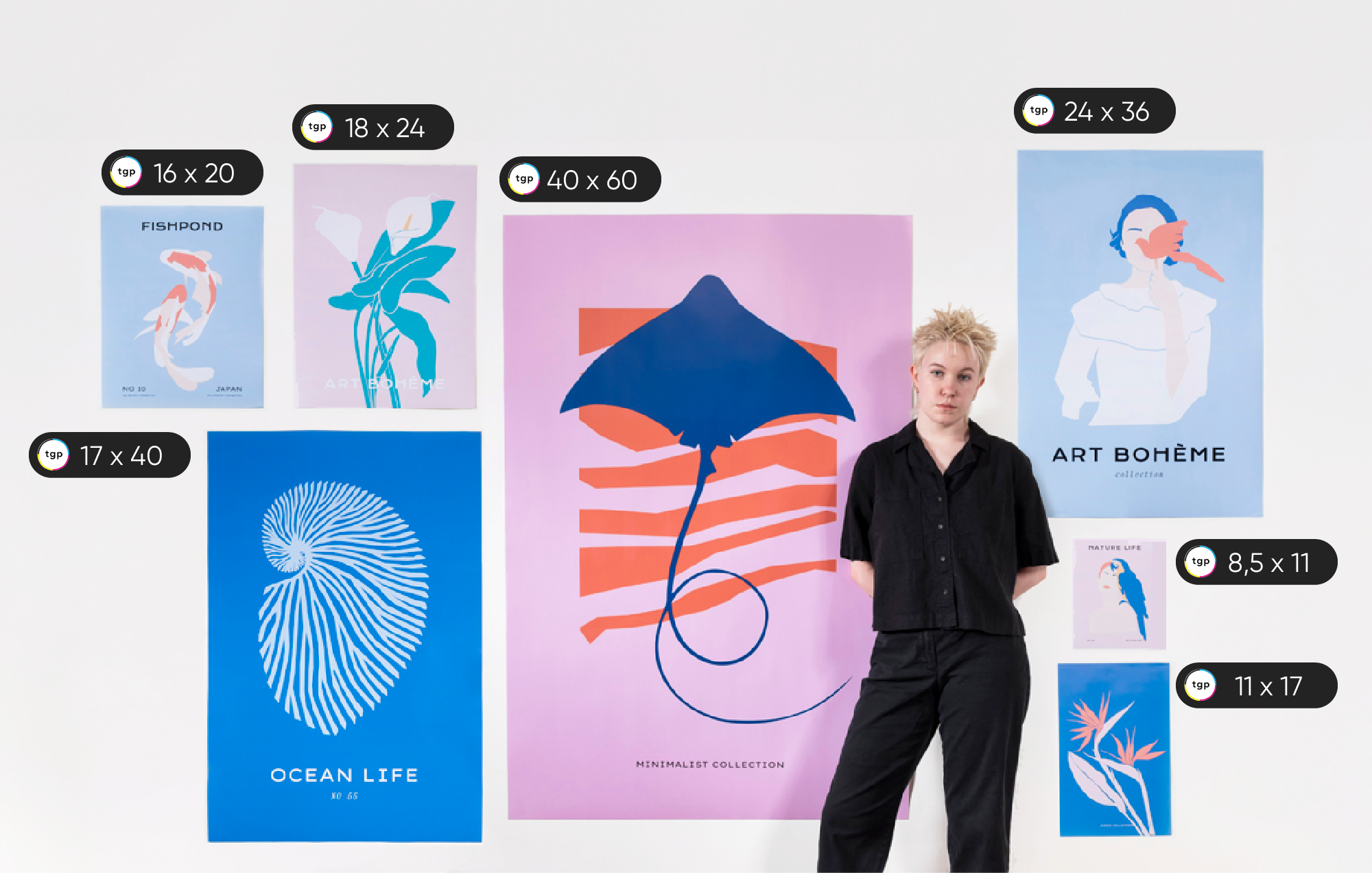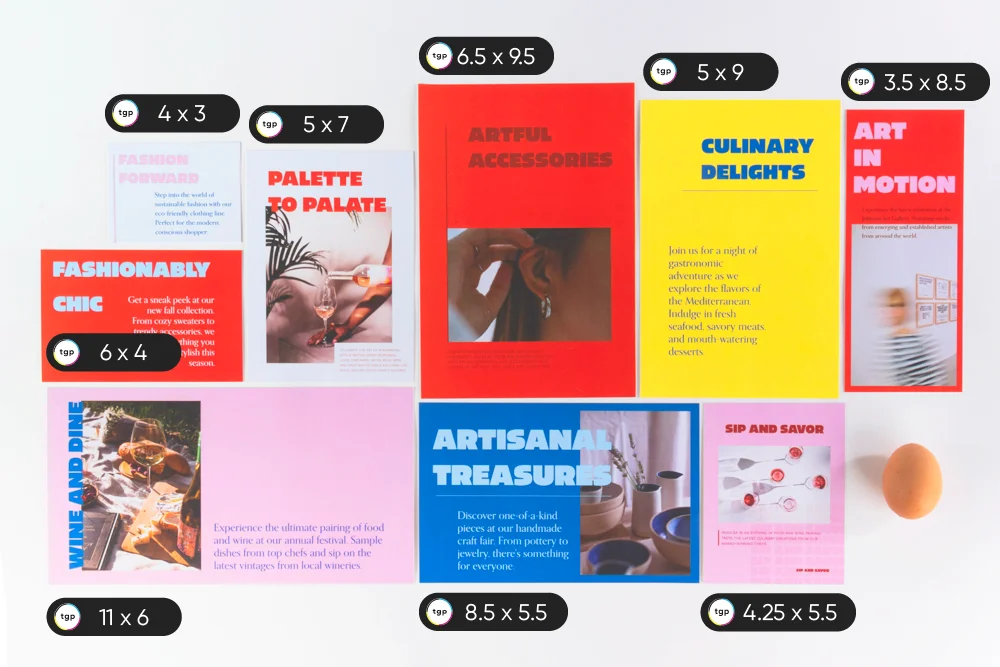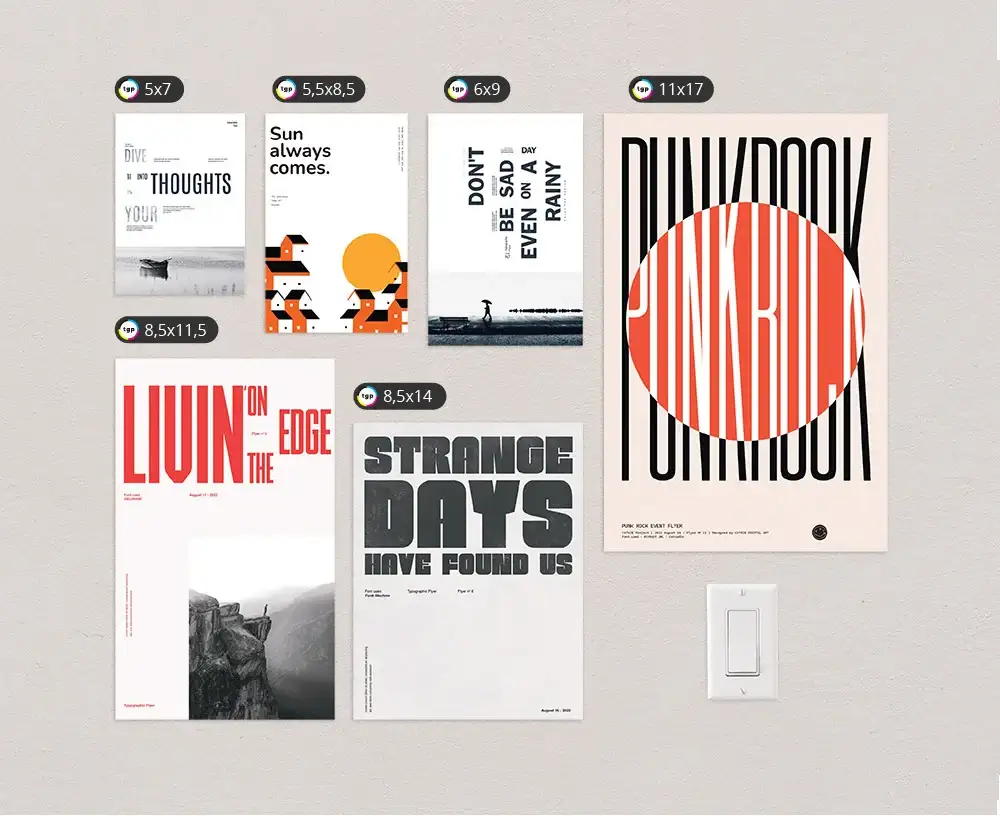In our digital world, where it’s almost impossible to escape screens, there’s something special about the tactile joy of flipping through a physical newspaper. Feeling the paper between your fingers, smelling the fresh ink, and hearing the rustle of pages turning, it’s an experience that digital just can’t replicate. And just like our screens, newspapers come in a variety of sizes.
As a full-service commercial print shop known for our newspaper printing capabilities, we understand the variety of sizes available can be overwhelming. That’s why we’ve put together this guide to the most common newspaper sizes.
Our goal is to help print designers and buyers quickly and easily compare these sizes at a glance. We believe that having a basic understanding of the different newspaper formats can help you pinpoint the perfect size for your project right away, saving you from the expensive and time-consuming process of experimenting with multiple sizes.
At A Glance: Comparing Common Newspaper Sizes
| Common Name | Publication Size in Inches | Size in Pixels at 300 ppi | Size in Millimeters |
| TGP Broadsheet | 22.75 x 17 | 6825 x 5100 | 577.9 x 431.8 |
| TGP Tabloid | 11.375 x 17 | 3412.5 x 5100 | 288.925 x 432 |
What Are The Different Formats Of Newspapers?
Newspapers typically come in a few standard sizes, which vary depending on the publication’s preference and its target audience. Here are the most common newspaper sizes.
TGP Broadsheet Size
Size in Inches: 22.75” x 17” with a live/printable design area of 21” x 16”
Size in Pixels (at 300ppi): 6825 x 5100 pixels
Size in Millimeters (mm): 577.9 x 431.8 mm
Closest International Size: A2 (420 x 594 mm)
The broadsheet is one of the largest standard newspaper formats. Traditionally, this size has been associated with “serious” journalism, used by major daily newspapers around the world, such as “The New York Times” and “The Washington Post.” The large format allows for extensive coverage of news, detailed reports, and includes large photographs and illustrations.
Today broadsheet newsprint is used for a variety of content from look books, marketing materials, and more. Broadsheets are ideal for readers who prefer an in-depth analysis of news and events. The size offers plenty of space for multiple columns, making it perfect for detailed articles and complex page layouts.
If you’re ready to design your newspaper but nervous about the details like sizing and fold lines, our blank broadsheet template is here to help, so you can dive right into your creative process.
Not a fan of starting from scratch? No worries! We’ve got pre-designed templates that are super easy to customize, making it a breeze to add your content and get it ready for print.
There Is No Standard Measurement For “Broadsheet”
The term “broadsheet” refers more to a style or format of newspaper rather than a strict size specification. Originally, “broadsheet” was a term for a large, high-quality paper format used primarily by newspapers that aimed to provide comprehensive coverage with a formal, detailed presentation.
Over time, while the term has remained associated with “serious” journalism, the exact dimensions of broadsheet newspapers have varied significantly among publishers and regions, contributing to the lack of a single standard measurement. Several factors contribute to this variability:
- Printing Press Variations: Different newspapers use different types of printing presses, each of which might have unique capabilities and size limitations. This results in variations in the maximum and minimum sizes that can be printed.
- Market Preferences: In different parts of the world, readers and distributors might have preferences for certain paper sizes that fit better with local habits for reading, transporting, and selling newspapers.
- Historical Changes: The size of broadsheets has also changed over time due to economic factors (like paper costs) and changes in technology (like new printing techniques).
- Regulatory and Practical Considerations: In some cases, the size of broadsheets may be influenced by postal regulations, distribution logistics, and how the newspapers are displayed and sold in various outlets.
While broadsheets generally remain larger than other newspaper formats like tabloids, their exact size can differ from one publication to another, leading to the absence of a universal standard measurement for broadsheets.
TGP Tabloid Size
Size in Inches: Publication Size in Inches: 11 ⅜” x 17” with a live/printable design area of 10” x 16”
Size in Pixels (at 300ppi): 3412.5 x 5100 pixels
Size in Millimeters (mm): 288.925 x 432 mm
Closest International Size: B3 (353 x 500 mm)
The terms “tabloid” and “compact” refer to similar newspaper sizes but can carry different connotations regarding content style and journalistic approach. While they share dimensions, the key difference lies in the target audience and editorial style. Compacts seek to preserve the integrity and depth of broadsheets, whereas tabloids may prioritize entertainment and impact.
The tabloid / compact newspaper format is smaller and more compact compared to the broadsheet, offering a balance between content density and portability, which is appreciated by a broad range of readers.
This size is well-suited for sensational news, local stories, and more visual content, making it popular among daily and weekly city newspapers as well as for special interest publications.
Tabloid / compact size is easier to handle and read in confined spaces, like during commutes on public transportation, due to their manageable size. The format tends to feature bold headlines, lots of photographs, and shorter, more concise articles that cater to a quick reading experience.
Ready to take action on your newspaper design without getting bogged down by the details like sizing and fold lines? Our blank newspaper template is just what you need so you can focus entirely on your creative vision.
Don’t want to start from scratch? No problem! We also provide pre-designed templates designed for simplicity and customization, making it a breeze to insert your content and head straight to press.
Custom Newspaper Sizes and Post-Production Options
While the typical newspaper sizes do the job for most, having the option to customize your newspaper’s dimensions allows you to truly make your publication your own.
But it doesn’t stop at just size. Customizing your newspaper opens up a world of creative post-production options. Think about the impact of unique folds that surprise your readers, special binding options that add an elegant touch like saddle stitching or perfect binding, or even custom cuts that create an eye-catching silhouette.
These thoughtful details not only enhance the appeal of your newspaper – they set your publication apart in a competitive landscape.
Thomas Group Printing can support your specialty sizes. Common standard mini sizing includes 8″ x 10.5″, 6×9″, 6.5″ x 9.5″,and 7.5″x10″ or we can work with you to produce a fully custom, bespoke piece.
We can even saddle stitch (up to 11″x17″) newsprint.
By embracing custom sizes and exploring innovative post-production possibilities, you create a newspaper that’s not just a carrier of information, but a memorable part of your readers’ experience – something that truly stands out.
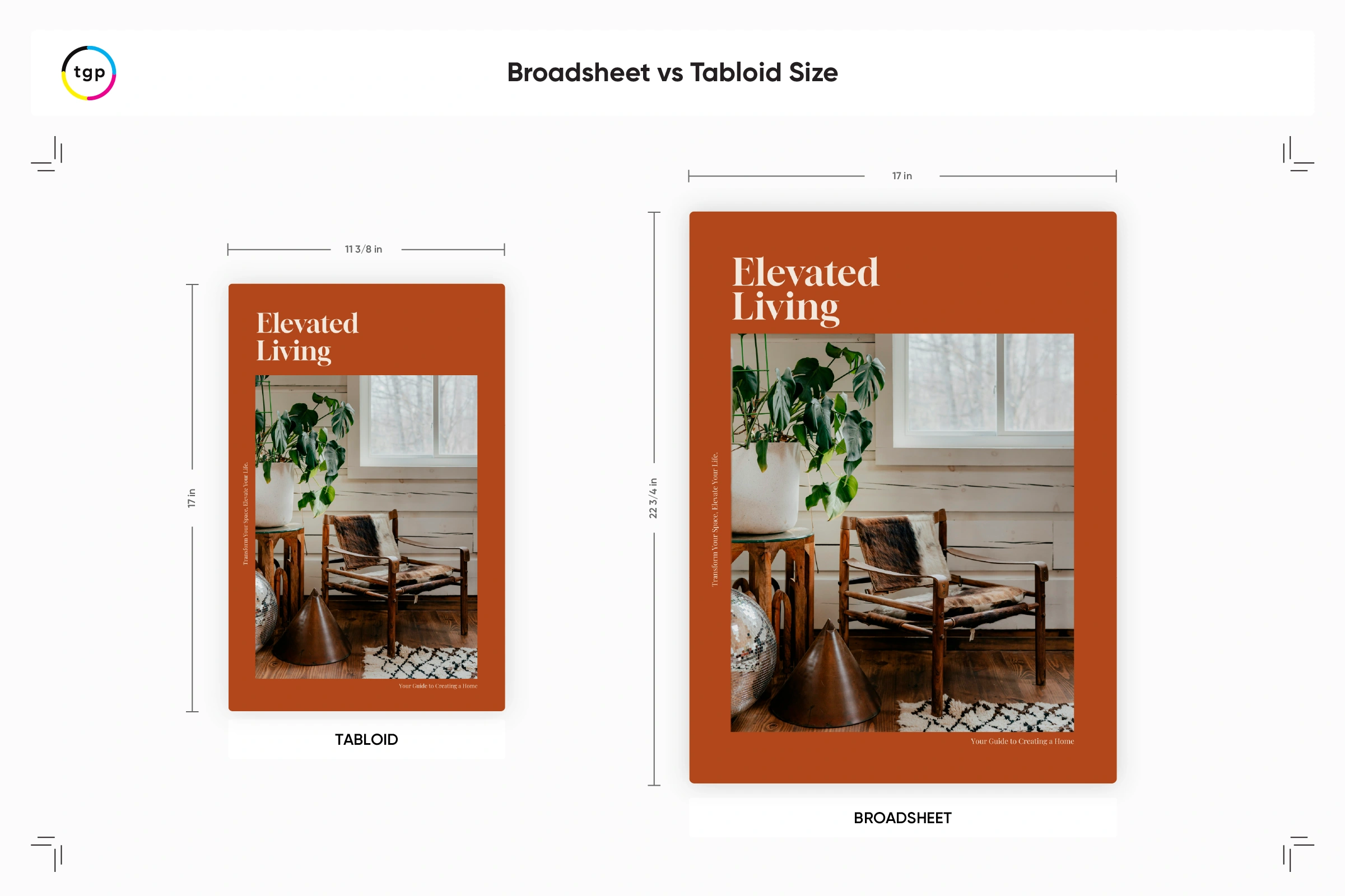
Follow Print Design Best Practices
When getting your newspaper ready for print, there’s more to consider than just size. By adopting best practices in print design, you enhance the quality of your newspaper and also streamline the printing process. These steps help to avoid common pitfalls and guarantee that your newspaper presents beautifully in the hands of your readers.
Page count must be divisible by 8: Because of the way printing presses work, newsprint publications are available only in page counts of 8s: 8, 16, 24, 32, 40 …etc.
Prepare a High-Resolution PDF: Always use a high-resolution PDF format with individual pages laid out. This helps in maintaining the clarity and quality of your text and images.
Incorporate Bleed: If your design includes a bleed, confirm that it extends by .125” around the edges of each page. This is crucial for avoiding white edges after trimming and provides a cleaner, more professional look.
CMYK Color Mode: Always design in CMYK color mode, not RGB. CMYK is designed for printing and is the best way to confirm that the colors you see on your screen are accurately reproduced on paper.
Outline Your Fonts: Embed fonts or convert all text to outlines before sending your files to print if your chosen fonts appear precisely as designed, without being substituted if the printer does not have the same font files.
Black Ink Settings: If your newspaper includes black ink printing, set all type settings exclusively in black ink to avoid registration issues during printing.
Image Setup: Any black and white images should be set up in grayscale so the depth and contrast of the images are maintained correctly and to avoid registration issues during printing.
Resolution At 300dpi: For clear and sharp images, particularly in larger sizes, confirm that all photographs and graphics are set at 300 dpi. This prevents images from appearing pixelated or blurry when printed.
Streamline Your Design Process: Download a free starter file tailored for newspaper design to kickstart your project. This file provides a ready-made template that addresses common design considerations, allowing you to focus on creativity while handling technical specifics effortlessly.
By following these guidelines, you can significantly enhance the professionalism and appeal of your newspaper, so it looks as intended when it comes off the press.
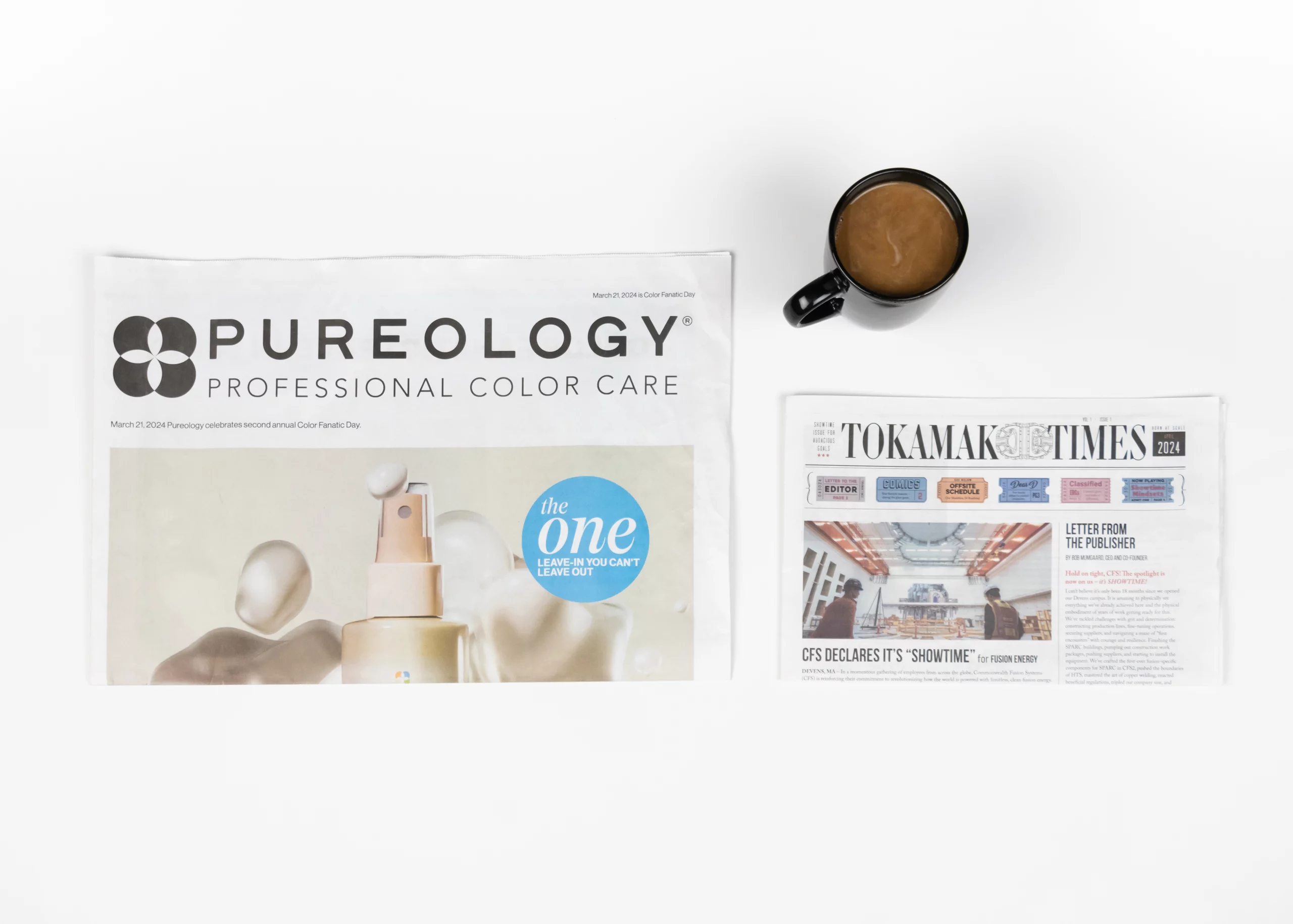
Understanding Newspaper Sizes: More Than Just Dimensions
The choice of newspaper size isn’t just a matter of logistics; it reflects a deeper understanding of reader preferences and content goals:
Broadsheets are perfect for those who enjoy sitting down with their coffee to pore over thorough analyses and expansive coverage. This larger format offers the space needed for detailed storytelling and comprehensive news.
For those on the move, tabloids offer a practical solution. Their compact size makes them easy to handle, perfect for quick updates during a busy commute.
The Berliner and other less common sizes stand out with its distinctive style. The modern dimensions not only catch the eye but also bring a fresh aesthetic to the traditional newsstand.
In the advertising and publishing world, the size of a newspaper isn’t just a physical characteristic, it’s a strategic choice that impacts how readers interact with the content.
Whether you’re deeply engaged in unfolding stories or involved in deciding how they’re presented, appreciating these dimensions can enhance your experience and appreciation of this enduring medium. Each format serves a specific audience and purpose, contributing to the rich tapestry of journalism and print media.
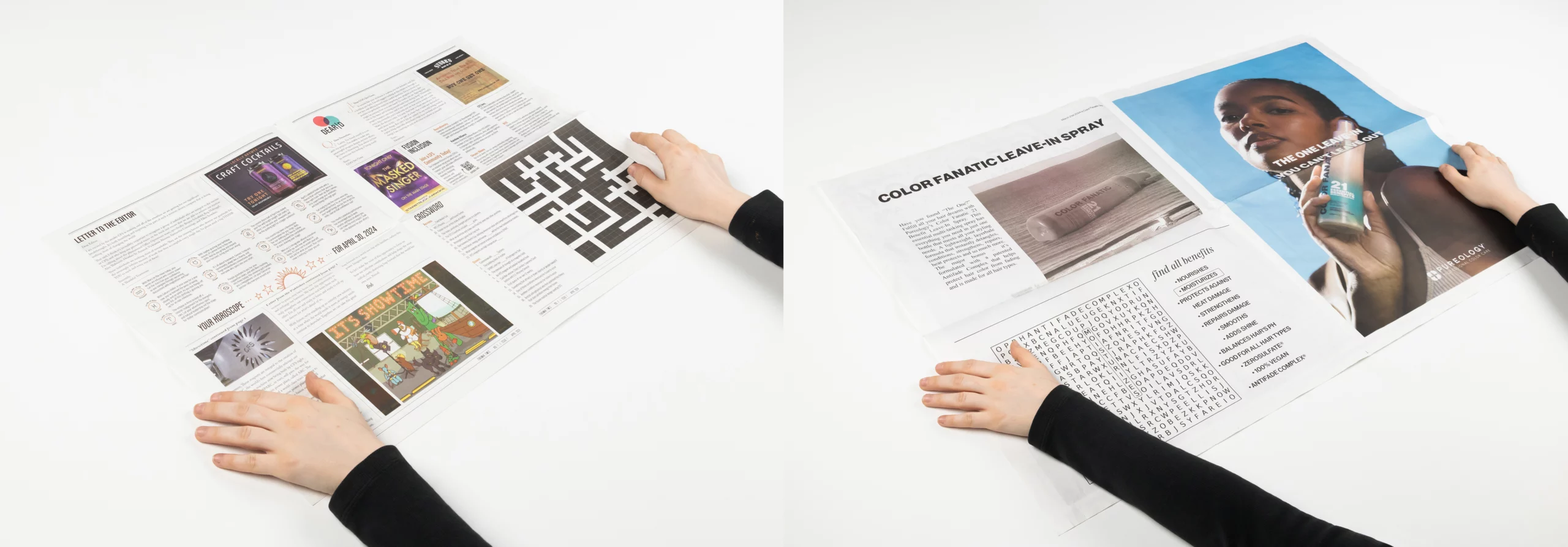
How To Choose The Best Size For Your Newspaper
The right size for your newspaper isn’t just a technical decision – it’s about connecting with your readers and making sure your publication stands out for all the right reasons. Let your content and your audience guide your design.
The content you plan to publish is key. Broadsheets are great for deep dives and detailed stories that require more space to breathe. On the other hand, tabloids and compact sizes are fantastic for quick reads and snappy updates that cater to readers on the move.
If your aim is to reach a wide audience with varied interests, a broadsheet might be your best bet. However, if you’re targeting a niche audience, perhaps a smaller, unique format would be more engaging.
Navigating these considerations with a clear understanding of your goals and your audience’s preferences will help you pick a newspaper size that not only delivers your message effectively but also enhances the reading experience, making your publication a preferred choice among its readers.
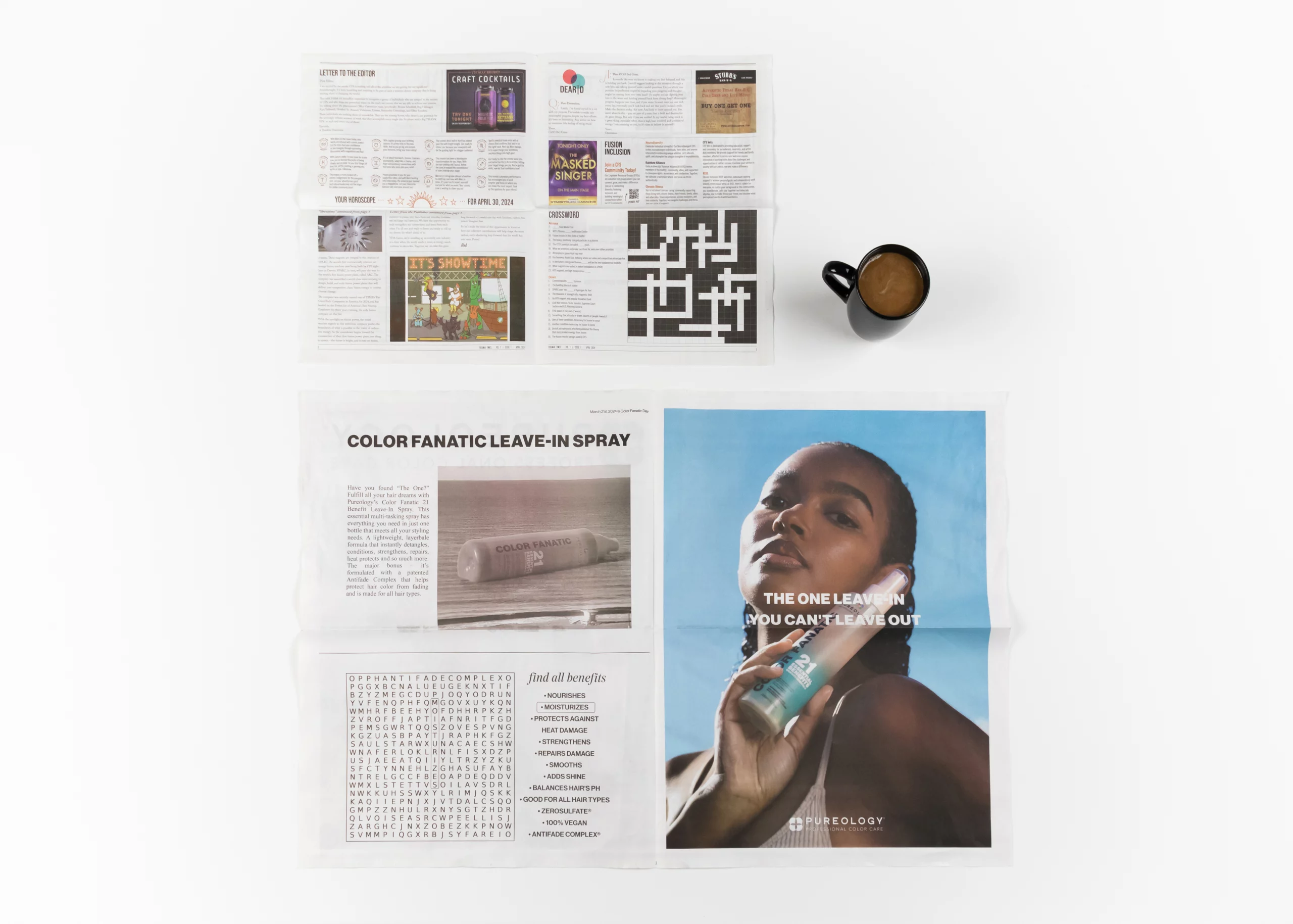
FAQs Related to Newspaper Sizes
What Are The Different Formats Of Newspapers?
The most common formats are:
- Broadsheet: Larger and typically more formal, used for detailed articles and comprehensive coverage.
- Tabloid: Smaller and more compact, often associated with more sensational news.
- Berliner: Intermediate in size between broadsheet and tabloid, popular in Europe.
- Compact: Similar to tabloid size but often with a more serious tone, sometimes referred to as a small broadsheet.
What Is The Standard Size Of A Newspaper?
In the U.S., the standard newspaper sizes are broadly categorized into Broadsheet and Tabloid. Broadsheets are larger, typically measuring around 15 x 22.75 inches, while Tabloids are smaller, around 11 x 17 inches. These sizes can vary slightly based on the publisher, location, and other factors.
Free newspaper printing price calculator
Get a free, instant quote for your newspaper project. Proceed with your order now or hold your price for when you're done designing!Your quote has been sent.
All quotes are good for 30 days. Just reply to our email to continue with your order.
If you don't receive your quote, contact production@thomasgroupprinting.com
Do International Newspapers Follow The Same Size Standards As The Us?
As you can see, international newspapers don’t follow the same size standards as the U.S.
Newspaper sizes vary worldwide depending on cultural preferences, economic factors, and the printing technologies available. For example, European newspapers often use slightly different dimensions for their broadsheet and tabloid formats.
Is a Newspaper A4 Size?
No, standard newspapers are not printed in A4 size. A4 (210 x 297 mm) is closer to letter size and is commonly used for office documents, magazines, and some professional printing but not typical for standard newspapers.
Is a Newspaper A3 Size?
Newspapers are also not typically A3 size, which is 297 x 420 mm. A3 is larger than A4 and can be used for larger printed materials like small posters or folded brochures but is not a standard newspaper size.
What Design Considerations Are Important For Broadsheet Vs Tabloid Formats?
Broadsheet offers more space for in-depth stories, complex layouts, and large images. It’s suitable for detailed journalistic content and extensive reporting. The layout often includes multiple columns and larger headline texts.
Tabloids, due to their smaller size, are easier to handle and read in crowded spaces. The design is typically more visually engaging with larger images and bolder, larger text to grab attention. It’s suited for quicker reads and more visually-driven content.
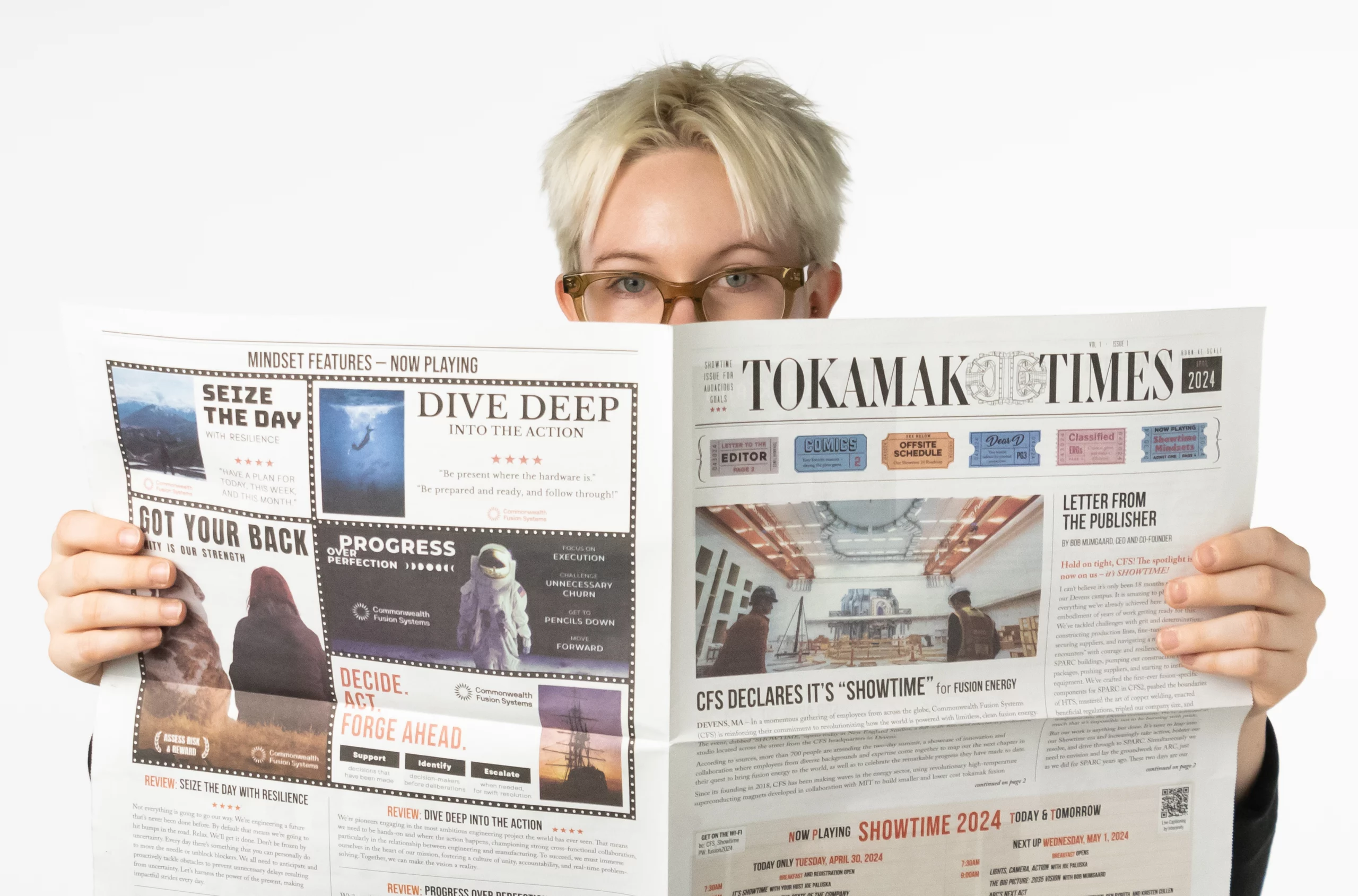
Work With An Experienced Commercial Printer
When creating printed newspapers, the quality of the print should mirror the standards of your brand. Thomas Group Printing has over 100 years of experience in commercial printing. We are dedicated to making sure your newspaper printing process is quick, smooth, and flawless.
Trusted by some of the world’s leading brands as well as independent newspaper designers, we stand ready to meet your printing needs with expertise.
If you’re looking for a skilled and high-quality printer for your upcoming newspaper project, contact us for a personalized quote. Our experienced print production team is eager to help!
